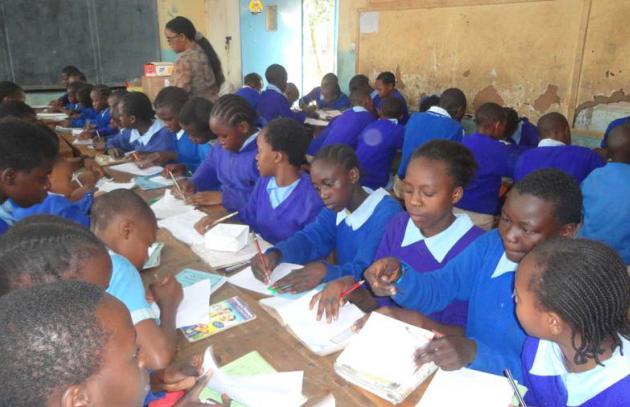28 February 2013
A new IIEP programme. A pilot country: Kenya
2a3443bf12.jpg

©K. Marangu
Standard 6 boys and girls learning at school in Nairobi, Kenya ©K. Marangu
Alt Text:
Stories behind gender equality in student achievement
Title Text:
Stories behind gender equality in student achievement
Fifteen years of SACMEQ assessment results have shown that the gender gap in learning achievement remains mysteriously stable, despite the fact that governments and the international community have multiplied efforts to close the gap.
What are the stories behind gender equality in student achievement?
Following the consultation with the Ministry of Education, IIEP decided to investigate in Kenya, with a pilot study to determine the likely reasons for the stability in the gap. Capitalizing on its own evidence-based Policy Forum on Gender Equality in Education and the follow-up e-Forum on the same topic (held in October 2011 and March 2012, respectively) – which helped identify areas in need of further exploration – the Institute quickly organized a study using qualitative research approaches and methods.
The project involved 20 Kenyan planners and researchers. Once trained by IIEP’s specialists, they undertook an exploratory study using interviews and observation techniques in a sample of schools in the Nairobi area. Among the issues studied were:
The role of leadership: What is the role of leaders at school and Ministry levels? What indicators had been used to measure the relationship between learning achievement and the role of leadership at school and Ministry levels?
Classroom and school management: How are classes managed by male and female teachers in order to provide equal learning processes in the classroom for both boys and girls? How are schools managed by male and female school heads in order to provide equal opportunities for: (i) boys and girls to progress in learning, and (ii) male and female teachers to advance professionally?
Views and beliefs: What views and beliefs do male and female teachers, school heads, and educational leaders at Ministry level have regarding the status of girls and boys? What views, beliefs, and aspirations do pupils and their parents have regarding education and the future for girls and boys?
Workshops were organized in 2012-13 under the collaboration between IIEP and UNICEF to share and validate the research instruments, to validate transcribed data, and to code texts for analyses. Following the first workshop, researchers saw the need to scale up and extend the project to other regions of Kenya, and that the training they had received from IIEP staff would enable them to train their colleagues in turn. Participants from Botswana, Malawi, Uganda, and Zanzibar who were invited as observers during the second workshop expressed their desire to launch similar research studies in their own countries, combining quantitative and qualitative approaches (cf. photo).
The pilot study in Kenya has revealed gaps in the provision of gender-appropriate education and provided policy suggestions that are actionable with minimum budgetary allocations. The third workshop proved an excellent opportunity to convince senior decision-makers to integrate the results in national policy. In his closing remarks at the workshop, the Ministry of Education called upon IIEP to extend pilot data collection beyond Nairobi, to allow an understanding of the regional contextual issues within Kenya. A senior decision-maker assured that the Ministry would use the preliminary findings during the review of the current Gender in Education Policy, which must be aligned with the Kenya Constitution 2010, Vision 2030, and the Basic Education Bill.
During the fourth workshop in April 2013, the researchers wrote some stories behind gender equality in learning achievement. These stories are envisaged to be shared during the final workshop on dissemination towards the end of 2013.





